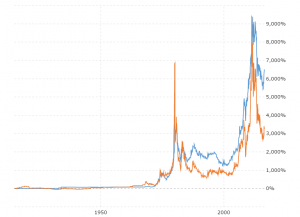Rare Coins from when Cash was King
In 1857, a 250-foot ship, the SS Central America, sank in a hurricane off the Carolinas, while sailing from Panama to New York City. Not only did 325 of the 578 passengers and crew on board perish, but 30,000 pounds of gold bullion was lost, triggering the world’s first financial crisis, the ‘Panic of 1857’. In 1988 an expedition recovered most of the gold, then valued at between $100 and $150 million, which the treasure hunters successfully defended against claims for the companies that had originally paid-out on the shipwreck. Tommy Gregory Thompson, the discoverer of the gold, was however sued by investors, went into hiding, and was eventually arrested, extradited to Ohio, and had to return 500 gold coins he had hidden from his investors.
Only in 2014 did explorers return to the wreck, which was 7,000 feet down, and for coin collectors the highlight of that exploration was the finding of the purser’s lock box. At a time when cash was the necessary way to carry out financial transactions, both big and small, a ship’s purser – who is today responsible for a variety of administrative duties – was the keeper of the cash, both that of the ship, used for paying the crew, and as a bank for passengers, holding their money safely.
The lock box recovered from the wreck of the SS Central America contained two cloth bags of a mixture of U.S. coins, with a combined total face value of $1,588.95. The box itself was so fragile that when it was lifted by the remote equipment of the explorers, it collapsed immediately, but the two bags were well-preserved and could be salvaged.
One bag contained silver quarter dollars and half-dollars, while the other bag was filled with dimes. Those would normally have been heavily corroded and obscured, but a unique situation prevented the coins from dissolving in the sea water, which is the usual fate of coins containing non-precious metals (dimes of the period contained 10% copper, and one-tenth of an ounce of silver) The inside of the box was not completely water-proof, but the lack of water movement in and out of it – the metal outside quickly corroded, sealing the box – meant that the necessary oxygen was not present. For metals like copper to dissolve, oxygen is needed, and in its absence the coins were effectively sealed in a ‘time capsule’. Even the cloth of the bags was intact. The picture, taken while the coins were still wet from the ocean, clearly shows the top condition they were in when found.
There were 8,873 dimes in that bag, and 503 quarters, 345 half dollars in the other. In addition, a smaller bag inside the bag of silver contained 55 gold dollars, 56 Quarter Eagles and 41 Half Eagles. The coins are dated from 1796 to 1857. Some are in poor condition, as at that time even bent and damaged coins often remained in circulation. Others are pristine examples of their type.
The purser needed a large supply of dimes, because at that time the lowest laboring sailors were paid 3 dimes a day, carefully distributed by the purser from his supply. In addition, he had to pay for supplies and materials for the ship, which was a vital communication link between the Americas.
Now this collection is on the market, and many rare coins are included. The silver coins are being sold by Universal Coin & Bullion of Beaumont, Texas. The California Gold Marketing Group LLC of Brea, California will shortly bring most of the other coins onto the market. One of the coins that will not be sold is a ’35-cent’ error coin. This is a 1838 ‘O’ Seated Liberty dime that had been over-struck at the New Orleans Mint with dies intended for an 1842-O quarter. This coin will however be exhibited in public, for keen collectors to take a look at.
















